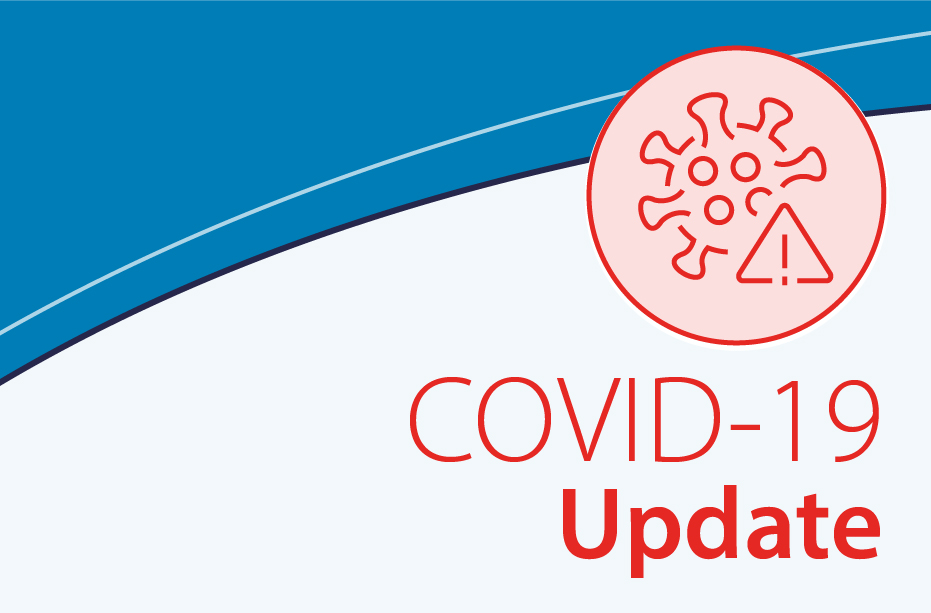Safe Mask Wearing in the Community
Published on 19 August 2020

Wearing a mask helps to reduce community transmission. One way COVID-19 is spread is when an infected person coughs, sneezes or speaks near another person.
If a person is infected with COVID-19, a face mask helps to stop them spreading COVID-19 when they cough, sneeze or speak.
Learn more about safe mask wearing and who should, or shouldn't wear a mask, below.
Put on your mask safely
- Before putting on your mask, wash your hands for at least 20 seconds with soap and water. Or use hand sanitiser with at least 60% alcohol
- Ensure you are using a new surgical mask or clean cloth mask. Do not reuse surgical masks. Always use a clean and dry cloth mask
- Check the mask for defects, such as tears or broken loops
- If you are wearing a surgical mask, position the coloured side of the mask outward
- If the mask has:
- Ear loops: Hold the mask by both ear loops and place one loop over each ear
- Ties: Hold the mask by the upper strings. Tie the upper strings in a secure bow near the crown of your head. Tie the bottom strings in a bow near the nape of your neck
- Dual elastic bands: Pull the bottom band over your head and position it against the nape of your neck. Pull the top band over your head and position it against the crown of your head
- A metallic strip or wire: Mould the bendable metallic upper strip to the shape of your nose by pinching and pressing down on it with your fingersPull the bottom of the mask over your mouth and chin. Be sure your mask fits snugly.
Wear your mask safely
- For each new situation put on a clean mask. For example, you might wear a mask on public transport until you get to work. You shouldn't reuse the same mask during your journey home. Carry clean masks in a paper or zip-lock bag with you.
- Don’t touch the mask while you are wearing it. If you do touch it, wash or sanitise your hands
- If your mask gets soiled or damp, replace it with a new one
Remove your mask safely
- When removing your mask, avoid touching your eyes, nose, or mouth at all times
- Remove your mask outside and away from other people, if possible
- Carefully remove your mask by grasping the ear loops or untying the ties. For masks with a pair of ties, unfasten the bottom one first, then the top one
- Dispose of single-use masks responsibly in the rubbish bin. For safety, put it into a sealed bag before putting it in the bin to ensure others won’t touch it
- Wash and dry reusable cloth masks after each use
- Store in a plastic or zip-lock bag until you have an opportunity to wash them
- Wash cloth masks in the washing machine with other clothes or by hand using soap
- Lay out flat to dry (in the sun if possible) or put in the dryer
- Store in a clean, dry place
- After removing your mask, always wash your hands for at least 20 seconds with soap and water. Or use alcohol-based hand sanitiser with at least 60% alcohol
Who should wear a mask
- NSW Health strongly encourages everyone to wear a mask when unable to physically distance, particularly in indoor settings
Vulnerable people
- Vulnerable people should wear a mask at all times outside the house. Vulnerable people may be over 70, have a compromised immune system or have chronic medical condition
Health workers
- NSW Health staff must wear masks if they are within 1.5 metres of patients to protect the patients
- The NSW Government has distributed masks to health workers to meet current demand and is monitoring the supply of masks across the state
Who should not wear a mask
Masks should not be worn by:
- Toddlers under 2 years of age and babies, as they are a choking and suffocation risk
- Children under 12 years of age, as they do not need to wear a mask
- Anyone who has trouble breathing wearing a mask
- Anyone who is unable to remove the mask themselves without assistance
- People who are deaf or hard of hearing (and their contacts), as for some people with hearing disabilities the mouth is essential for communication.
Some people in the community may also have issues with wearing masks due to other health conditions. We need to be respectful as reasons for not wearing a mask are not always obvious.
For further information on mask wearing, visit the NSW Health Face Mask page.